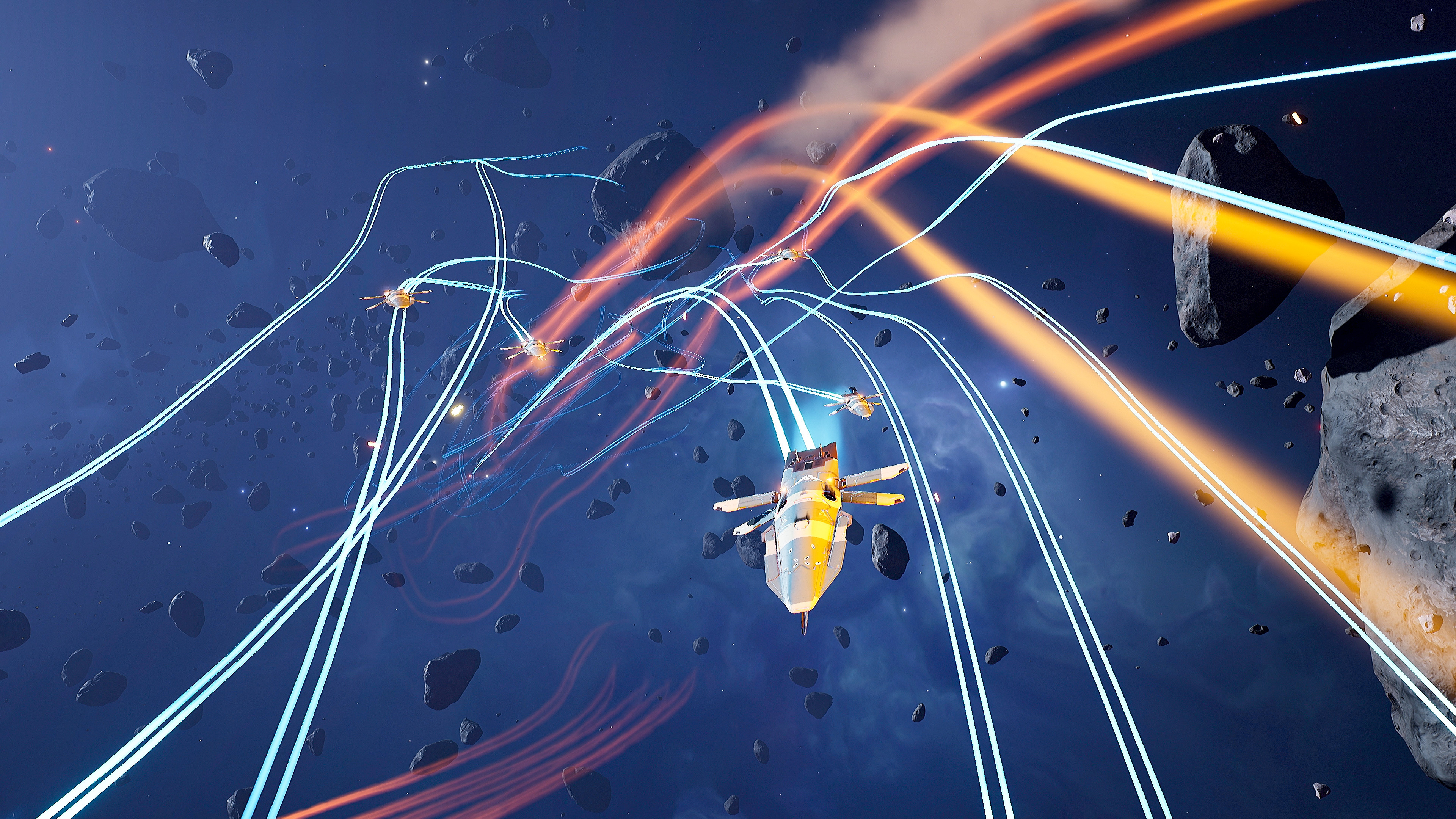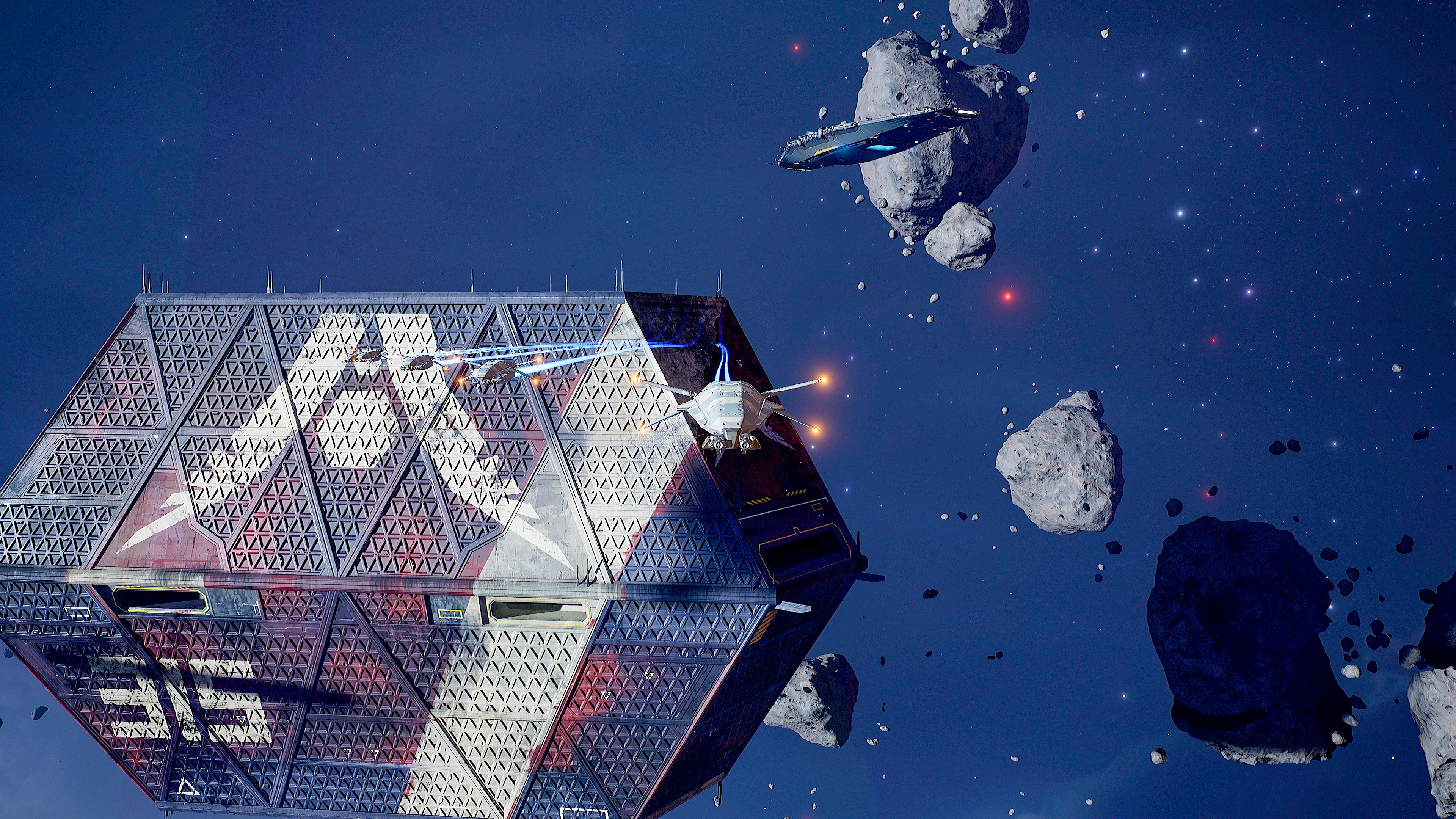Homeworld 3 is all about the 'terrain' of space
An evolution the devs say has been 20 years in the making.

It's the third mission of the game and, if this was Homeworld 2, I'd be screwed. Right now, I only have access to recon ships and interceptors—basic fighters that, per Homeworld's rock, paper, scissors design, are weak against the bigger, meaner frigates. And, I've been tasked with securing an area that, wouldn't you know, is being protected by two bigger, meaner frigates.
But I'm not playing Homeworld 2. I'm playing its successor, a game that developer Blackbird Interactive—a studio that's staffed by plenty of Relic luminaries who worked on the original games—describes as being 20 years in the making. A game that takes concepts once considered back then, but dismissed because the technology of the day just wasn't up to the task.
I'm playing Homeworld 3, a space RTS that's all about terrain.
Those frigates are guarding a small segment of a colossal, derelict ship, which acts as the battlespace for this mission. Blackbird is keen to point out that the environmental artistry that Homeworld is known for—the grandeur of space, its asteroid fields and derelict ships, is no longer just part of the skybox. It's now an active part of each mission—an aspect of terrain to strategise around.
"Terrain was a huge feature that was not able to be done at the time with the technology that was available for Homeworld 2," says game director Lance Mueller, "and that was part of the original vision. There was a lot of concept art brought over from Homeworld 2 that we used to feel the foundation."
This is good news for me, and bad news for the two enemy missile frigates, who are guarding a section of the map that's littered with panels that have broken off the derelict ship. These panels can act as cover. By right-clicking on a section of this debris, my interceptors will fly up behind them. Because Homeworld 3 is simulating each ship's attacks, it means that cover and other elements of terrain play a huge role in battles. If the missile frigates can't get line-of-sight on my ships, they're safe to continue their approach.
And so I continue, panel by panel, moving closer to the frigates until finally I'm in range. But rather than send my visible but well-covered squad into a close range suicide attack, I instead unleash my second surprise. While the frigates have been attempting to get a lock on my squad of well protected interceptors, my main squad was hiding underneath—in a tunnel running through what would have been the derelict ship's engines.
Keep up to date with the most important stories and the best deals, as picked by the PC Gamer team.

Tunnels like this provide a route between two points that block line-of-sight, meaning they're perfect for flanking manoeuvres and ambushes. My squad emerges from below, surprising the frigates as they fire pointlessly at a target they can't hit. In the ensuing fracas, I lose a whole bunch of them—they're still just interceptors after all—but my losses are far less than what the match-up would suggest.
Crucially, though, these elements of terrain nonetheless fit well into Homeworld's classic style of combat. Positioning and composition are still important. Attack angles and tactical retreats can still decide the moment-to-moment outcome. Despite the extra complication the environment brings, this still isn't an RTS that relies on heavy, exhaustive micro. Instead it feels like a genuine progression of the ideas laid out in the Homeworlds of old; a little extra spice that means battles can be more than just the sum of the units that make up each side.
"The convenient cover in mission three specifically is to set up the hard counters and soft counters of the game," says Mueller. "Terrain is supposed to be more of a creator of soft counters. In previous Homeworlds, if you brought a bunch of fighters against a bunch of frigates, there's nothing to stop them from just immediately launching all of their weapons at you. Now you're able to move your fighters and use the terrain and get on top of something, which now means you've increased that time to kill, so that you don't die immediately before you get there."
With the frigates dead and the points captured, my mothership gains the ability to build bombers—a natural counter to the missile frigates. Now I'm more than ready to steamroll the rest of the mission, although a more clever opponent could have still caused me some trouble. "The bombers coming after show you that there still are hard counters," says Mueller. "But again, the terrain—even with those—if you were to micro the missile frigates, you could bind to cover as well… if you think about that from a PvP perspective."
The irony of Homeworld 3 is that it does feel like a Relic RTS—specifically a more modern one from the post-Company of Heroes era. The use of terrain, and particularly cover, gives it a strong flavour of modern RTS design, even while it seemingly retains the design philosophy—and the vibes—that built its legacy as a cult classic of the genre. I'm eager to see how these design elements play out in a more organic way, in a mission where they aren't being so clearly tutorialised to the player. But if done right, this should be a meaningful progression of the series—one that may even justify that 20-year wait.

Phil has been writing for PC Gamer for nearly a decade, starting out as a freelance writer covering everything from free games to MMOs. He eventually joined full-time as a news writer, before moving to the magazine to review immersive sims, RPGs and Hitman games. Now he leads PC Gamer's UK team, but still sometimes finds the time to write about his ongoing obsessions with Destiny 2, GTA Online and Apex Legends. When he's not levelling up battle passes, he's checking out the latest tactics game or dipping back into Guild Wars 2. He's largely responsible for the whole Tub Geralt thing, but still isn't sorry.

